While any microphone can record audio, most won’t be able to produce satisfactory results. Those who want high quality recordings must get themselves high quality equipment. Professional microphones are obvious choices as they are the gold standard in the industry. However, not everyone has the cash to spare for this kind of purchase. The good news is that there are many products that can bridge the gap for enthusiasts. Below are some of the top recording microphones that can be used for podcasts, video calls, music projects, and the like:
Contents
- 1. Blue Snowball iCE Condenser Microphone
- 2. PoP voice Professional Lavalier Lapel Microphone
- 3. FIFINE USB Microphone
- 4. Audio-Technica ATR2500-USB Cardioid Condenser Mic
- 5. CAD Audio U37 USB Studio Condenser Recording Microphone
- 6. Samson Go Mic Portable USB Condenser Microphone
- 7. Neewer NW-700 Professional Studio Broadcasting Recording Microphone
- 8. Fifine Metal Condenser Microphone
- 9. TONOR Professional Studio Condenser Microphone
- 10. ZINGYOU Condenser Microphone Bundle for Studio Recording
- Recording Microphone Selection Tips
- Types of Microphones for Recording
- Top Microphone Brands
- Average Microphone Pricing
- Questions and answers (Q&A)
- References
1. Blue Snowball iCE Condenser Microphone
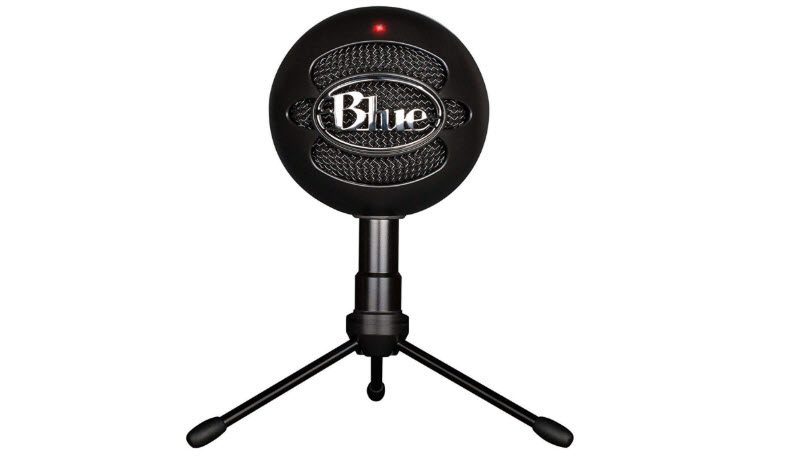
The Blue Snowball iCE is a popular option for those who like to use Skype and FaceTime with their loved ones. This condenser microphone has a cardioid setup and excellent clarity. It may not reach the level of professional mics but it will certainly satisfy casual users. Even those who are trying to start a podcast or a vlog can depend on this affordable product while they wait for the advertisers to notice their work and give them funds for upgrades. The frequency response lies between 40 Hz and 18 kHz. It is compatible with Mac and Windows OS.
It can be connected to any USB port. The sample rate is 44.1 kHz at 16-bit. The circular head rests on a short trunk that is supported by its own mini tripod. This makes it convenient for placement on any flat surface. Owners can purchase an adjustable boom with scissor arm that clamps to a table. This would make it easier to find a comfortable placement for different users or recording positions. The Snowball iCE comes in black and white colorways.
PROS
- Good value for money
- Decent audio quality
- Plug and play setup
CONS
- Picks up background noise
2. PoP voice Professional Lavalier Lapel Microphone
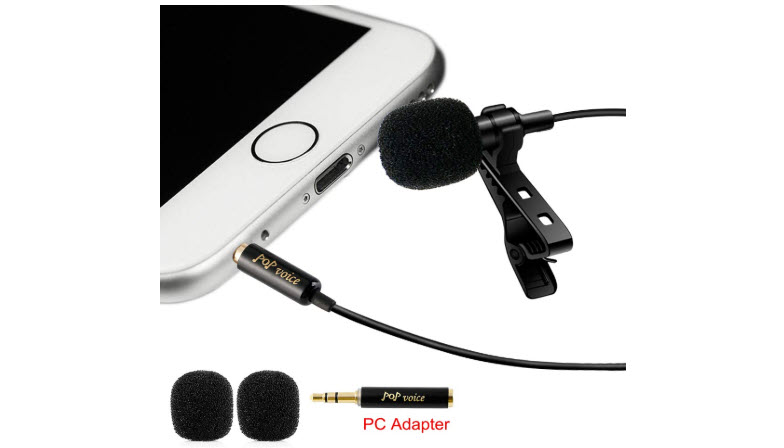
Whereas the Blue Snowball iCE was made for computer recordings, the PoP Lavalier Lapel Mic is better suited to phone recordings. It can be connected to the combo earphone and mic jack for phones that still have them. A PC adapter is included. The idea for this product is that the phone is becoming the Swiss Army knife of the modern age. In the past, you would need a dedicated voice recorder and commit everything to tape. Now even news reporters are using their phones in ambush interviews. This mic can help them get better audio quality.
This should also be handy for those who are using Facebook Live or other livestreaming applications. The vast majority of smartphones don't really have a solid mic that can pick up pleasant audio from the environment. If you shift to this lapel, then your recordings will instantly be so much better. Those who are using iPhones should see to it that they have an adapter for their non-standard ports, as the one in the package is only good for laptops.
PROS
- Great accessory for smartphones
- Small and compact
- Much better audio fidelity compared to built-in mics
- Very affordable accessory
CONS
- Cable can get in the way
3. FIFINE USB Microphone

Sometimes you need a USB mic to record a voiceover for home videos, create YouTube vlogs, use voice chat, coordinate in group games, and so on. The FIFINE USB Microphone can do the job fine without doing anything flashy. It looks just like a regular mic with the end connected to a tiny tripod. A thick cable runs from the device to your computer's port. This is compatible with both Mac and Windows so don't worry about the drivers. On the other hand, it is not compatible with phones and Xbox consoles.
The frequency response ranges from 50 Hz to 16 kHz. This is certainly narrower than many of the high quality options, including the Blue Snowball iCE, but it may not be important if you are only focused on voice recordings. Use this for podcasts, singing, Google Voice search, and the like. You will not be disappointed. For musical recordings, on the other hand, you should look elsewhere.
PROS
- Budget-friendly price
- Cross-platform compatibility
- Simple no non-sense mic
- Better sound than built-in laptop mics
CONS
- Narrow frequency response
4. Audio-Technica ATR2500-USB Cardioid Condenser Mic
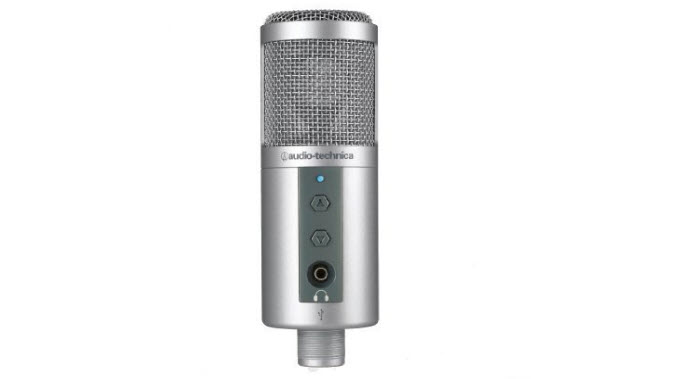
Audio-Technica is a respected name in the recording industry. Its microphones and earphones are considered to be some of the best in the business. For those who have the money to spare, the company's ATR2500-USB should certainly be appealing. It truly looks and feels like a professional device. The cylindrical unit has a silver finish throughout. There is an LED power light, volume buttons, and an earphone jack. It has an AD converter with a 16-bit, 44.1 and 48 kHz sample rates. As the name implies, it features a USB cable for PC connections.
Thanks to the headphone jack, it is possible to monitor the mic output with no delays. This is great for times when timing is important. The package includes a tripod desk stand, a pivoting mount, and a USB cable. You can use this out of the box with ease and expect excellent quality. Although the price is higher than average in this product category, it is still quite affordable even for casual users.
PROS
- Superior quality
- Headphone jack and volume adjust
- Great analog to digital converter
CONS
- Higher than average price
5. CAD Audio U37 USB Studio Condenser Recording Microphone
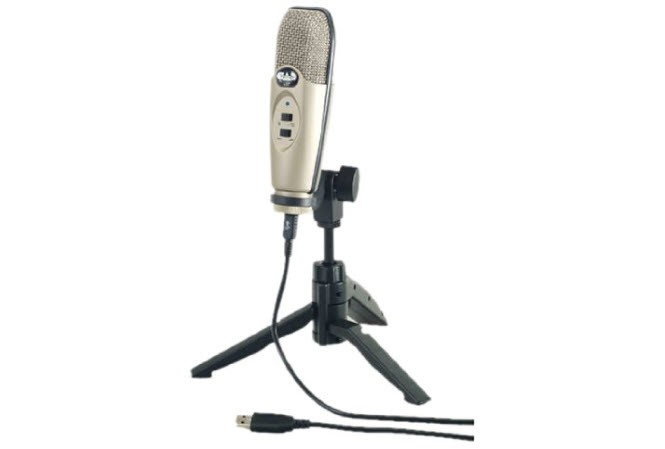
Here is another top tier option for audiophiles from CAD. The U37 Studio Condenser Recording Mic can produce vibrant audio. It has a cardioid pickup pattern which is handy when you are trying to reduce background noise. The main sound source, such as a speaker, can be heard more clearly. Of course, it would still be best to record in an enclosed room free of distractions and noise sources as this is a sensitive device. Distortion, another common recording issue, is also minimized thanks to the 10dB overload protection.
Like many others in this list, the package comes with a tabletop tripod and mount. This should make it easy to use for casual voice recordings in podcasts, interviews, voiceovers, and the like. The price is similar to that of the Audio Technica and the quality is comparable as well. The extended frequency response should make it possible to record instruments with decent outcome.
PROS
- Variable mic settings
- Plug and play
- Good sound quality
- Lengthy cable
- 10dB overload protection
CONS
- High sensitivity could pick up fan noise
6. Samson Go Mic Portable USB Condenser Microphone
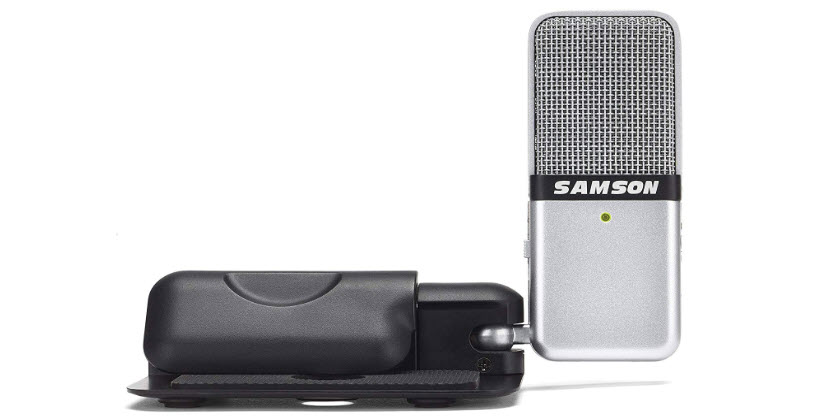
If you are an audio engineer or even just a student on-the-go, then you need equipment that can keep up with you. That usually means an editing station such as a powerful laptop, as well as a portable microphone. The Samson Go Mic is a great choice for this type of scenario as the unit is light and compact. Most mics are round but this one is rectangular and is about the size of a wide chocolate bar. It folds out to reveal a clip that can hold it firmly on top of the laptop screen.
The frequency response is laudable going from as low as 20 Hz to as high as 20 kHz. The resolution is at 16 bit and 44.1 kHz. Those approach the specifications of professional equipment at a fraction of the price. Pickup pattern is dual with omnidirectional and cardioid in the same unit. Output is available through a USB cable.
PROS
- Dual pickup pattern
- Incredible portability
- Zero-latency monitoring
- Wide frequency response
CONS
- Fragile chassis
7. Neewer NW-700 Professional Studio Broadcasting Recording Microphone

If you would like to turn your room into a full recording studio, then you can start by getting the Neewer NW-700. For just $28.99, you can have a condenser microphone, a scissor arm stand, shock mount, and a mounting clamp kit. There is also a pop filter to improve speech recordings, an anti-wind foam cap, and a 3.5mm male to XLR female cable. Users will still have to purchase additional items separately including a 48V phantom power, cable adapters, and a good sound card for best results.
It looks like a lot of work but there are plenty of guides to set it up. Once you get everything dialed, you should have a lot of fun making your recordings. It will really feel like a professional studio. You could purchase a USB adapter that is compatible with Mac and Windows for plug and play usage.
PROS
- Generous package
- Relatively low price
CONS
- Tricky setup for beginners
- Need for external power
8. Fifine Metal Condenser Microphone

FIFINE is back in the mix with this USB table top offering. This one is a lot more flashy than the earlier product of the company discussed on this list. The modern minimalist black styling should please a lot of industrial design enthusiasts. It is clean and functional with only a small dial for volume control. This device should be able to handle most voice-based applications with ease.
Users will be pleased with the audio quality and the option to attach to an arm mount, although many will be quite happy with the included tripod. It is not as sensitive as others. Proximity is crucial for usable volume. This should work on both major operating systems with no issues.
PROS
- Impressive design
- Solid recording quality
- Arm mount option
CONS
- Low sensitivity
9. TONOR Professional Studio Condenser Microphone
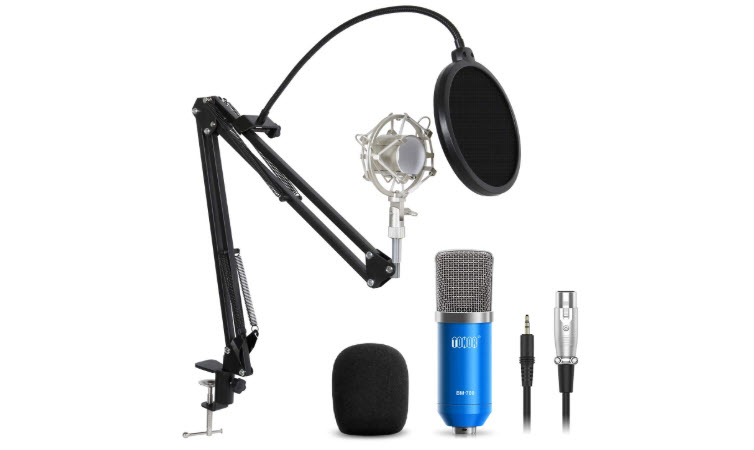
This is another complete kit for a home studio fit out. Get everything you need from the mic to the much needed accessories. The beautiful blue color is just another nice touch to make this a unique offering in a land full of blacks and silvers.
On the other hand, you would need a sound card and phantom power to make it all work. This is a small inconvenience if you want something that approaches a professional setup. It provides clear sound as advertised. However, a real pro studio would have far better equipment and sound-proofing.
PROS
- Good value for money
- Great package
- Nice output
CONS
- Low level hum
10. ZINGYOU Condenser Microphone Bundle for Studio Recording

If you don't mind trying generic brands, then you will open a new world of possibilities. This can be a hit or miss affair with cheap products. With the Zingyou BM-800 mic kit, you have yourself a nice deal. The company boasts of a noise level of only 16 dB, but you should be careful with the setup to achieve this. The shock mount has spider suspension to minimize noise from room movements.
Frequency range is from 20 Hz to 20kHz which should be good enough for instruments and voice. The connector is a 3-pin XLR to IEC. The mic itself measures 6.3 inches by 1.9 inches. A phantom power supply is required. Users report issues with the mic jack-USB adapter, so it is best to plug directly to the computer.
PROS
- Cheap for what you get
- Good enough for enthusiasts
- Lots of inclusions in the package
- Audio quality near top tier products
CONS
- Adapter causes noise
Recording Microphone Selection Tips
A microphone is a transducer or a device capable of processing sound captured by its membrane. In short, the membrane can formulate an audio signal, convey it to a mixer and finally to a recorder.

Transducers transform sound pressure waves into sound signals. They are distinguished by how this process takes place. It is by virtue of this principle that some types of microphones are better suited to recording some musical instruments than others.
Quality is the first factor to consider when selecting a recording microphone, especially if you are aiming for something to record professionally.
Based on the intended use (record voices or instruments), you should evaluate the polar figure. There is, for example, the omnidirectional figure, which comes with the capsule that is in the center of a circle. This type of microphone can be useful, for example, during a film shoot where all the sounds are captured in all directions.
You can find models that can be placed on a pod or table. The latter is comfortable for those who plan to use them while sitting. The frequency gauge is important since it indicates the range of frequencies that are picked up by the microphone.
Generally, all microphones are designed for use with voices and musical instruments, thus can cover the whole human hearing field (from 20 Hz to about 20,000 kHz).
At the design level, you find condenser microphones of various shapes and colors, which can satisfy specific recording needs. The most used colors are black, silver or gold but there are models in brighter and more colorful colors.
It is important to know that these are particularly versatile microphones. If you have to record a vocal style, especially in pop and rock, you should find condensers ideal.
The legendary SM58 from Shure, an authentic industry standard, is a good example. It is a microphone capable of correcting the multiple nuances of the human voice but also a distorted guitar. Consequently, it represents the first choice when you talk about the recording.
The Shure brand represents an authentic reference in both professional and amateur categories. Its products provide impressive performance at affordable prices. You can purchase the model by Shure for $100 or less. This recording device can easily record the voice and musical instruments, especially amplified ones.
You can find various types of microphones, each designed for a particular use. They allow even individuals who have never been in a recording studio to achieve quality audio recordings.
Condenser microphones, which are largely used for recording purposes take advantage of a different sound transduction technology. As a result, they are better suited to capturing sound detail, as in the case of voices or stringed instruments.
Unlike the dynamic ones, condenser units are more delicate, thus used for studio sessions, where a high level of sound detail is sought. It is common to find these microphones in recording studios where string quartets are recorded as well as recordings of symphonic or jazz music.
The condenser microphones boast great sensitivity and return an excellent response to medium-high frequencies. These are critical factors for a perfect rendering of the human voice and acoustic instruments. However, the price is considerably higher than with dynamic microphones.
Types of Microphones for Recording
When it comes to selecting a recording microphone, you can consider two main variants: dynamic and condenser. The former is a microphone considered more robust than the more delicate condenser microphone.
It generally has a more contained frequency response and is used mainly in concerts (to sing but also to record instruments). The price of a dynamic microphone is generally lower than a condenser.
It is resistant to blows and falls; however, due to the reduced sensitivity, it is not designed for light and soft signals. It is not necessary to supply them with power.
It comes with a flexible coil, which moves in a magnetic field, thus generating an electric current. At the same time, the pulses of sound pressure are transformed into electrical signals. There are two types of these microphones. Moving coil microphone: in this case, the magnetic coil immerses itself in the magnetic field.
Ribbon microphone: the membrane of the ribbon microphone is formed by a strip of wavy aluminum, suspended between two permanent magnets.
The condenser, on the other hand, is suitable for recording thanks to increased sensitivity and detail. It has a better frequency and transient response than a dynamic one. It is mainly used in the studio and can record vocals, guitars, pianos, wind instruments and strings.
It must be powered with 48 volts phantom current available in any preamplifier and sound card. The use of condenser microphones for home recordings is recommended as they are more accurate and offer better audio quality. A good condenser microphone comes with a selector used to change the polarity.
The main polarities of the condenser unit include omnidirectional (resumes from all directions), cardioid (takes up the area in front of the microphone and is the most used polarity) and supercardioid (the area similar to that of the cardioid but narrower).
Condenser units with small diaphragms can be used (to replace or in combination with large-diaphragm microphones) to record guitars or other stringed instruments and wind instruments or they can be used to record the cymbals or the snare drum.
The microphones with large membrane are more sensitive but subject to the effects of background noise. They produce a better sound and are used for vocals, guitar, flutes and stereophonic sounds.
The small membrane microphones have a more neutral sound than a large membrane and withstand a higher sound pressure level. In the same way, however, they also produce a hiss. They are used with strings, flutes, acoustic guitars and as an overhead microphone for drums. Phantom power is required.
Ribbon microphones also belong to the family of dynamic microphones but are more rarely used in productions because they are very expensive and, due to their structure, they are particularly sensitive. Enthusiasts appreciate the velvety, soft, warm sound and give them certain magic. Bows, woodwinds and guitars resonate voluminous and round. With a few exceptions, they don’t need phantom power.
Top Microphone Brands
The microphone market is filled with top brands that offer high-quality products for recording. When selecting a recording microphone, it is vital to pick the ideal unit carefully.
A good condenser microphone will be fine for recording voices and instruments in the same way. In reality, the choice of the microphone could be complex. Some of the leading brands include Samson, Neweer, sE Electronics, Shure and Rode.
Rode is one of the best brands for condenser microphones. With the NT1, you can be sure of getting good home recordings that, with proper mixing, will sound close to professional productions.
On the other hand, the Samson C01 can work well for anyone with a limited budget. You can settle for a Samson C01 if the quality needs are not a high priority. For those who are already more advanced or tried to record their songs in other studios, experts do not recommend starting with this microphone.
It has a frequency response of 40 to 18,000 HZ, thus cutting the highest frequencies, but still audible (from about 18kHz to around 20kHz).
The Neweer NW-800 is a new entry that is popular with buyers. It provides incredible value for money. The unit manages to surprise users thanks to its sound performance. The shock mount can reduce the noise.
The sE Electronics X1 is a respectable condenser microphone and an excellent solution. It gives you will have the chance to get good home recordings.
Average Microphone Pricing
The prices and quality of a recording microphone are generally linked. An economical condenser microphone may not offer the quality sought by some users but maybe more than sufficient for others. With $200, you can manage to take home a quality model.
To record without high quality demands, there are also cheaper models starting at $10. The variants are useful for simpler recording gigs like posting on your YouTube channels. When selecting a recording microphone and evaluating the various prices, remember to also consider the presence of any accessories, such as pop filter, cable and more.
Questions and answers (Q&A)
Which recording microphone brand is best?
This primarily depends on what type of microphone you will be using. For example, if you want to get hold of a decent quality dynamic mic, Shure offers a wide range of good and reliable models. On the other hand, if you’ll like a professional quality condenser or ribbon mic, it’s best to settle for one of any good models from AKG, Blue or Neumann (keep in mind however that some of these can be quite expensive!).
Is a USB microphone good for recording vocals?
First of all, a USB microphone is not any special type of microphone, rather it’s a mic that connects directly to a computer device via a USB port. So, as long as you are using a good microphone, there is no reason why you cannot use a USB mic for recording vocals. USB mics are especially handy for podcasts and other live transmission programs.
However, do keep this in mind that USB ports are almost always offered either with condenser mics or with dynamics. In other words, if you want to use a USB microphone, ribbon mic is not an option for you.
Are dynamic microphones good for recording?
Dynamic microphones, also known as ‘moving coil mics’, are especially good when it comes to recording close-miking instruments and vocals. In other words, they work great in short-range recording scenarios such as voiceover or narrations, recording vocals (at home or onstage), miking bass or electric guitar amps, close miking different types of drums and loud instruments and so on.
Dynamic mics offer great presence and clarity especially in the 5-10 kHz frequency range and they are able to withstand high SPL or volume levels within that range. In addition, dynamic microphones are highly popular for their long life, reliability as also for the fact that you do not need any external power supply or batteries for these mics.
On the other hand, you will be better off using condenser microphones for recording long range sounds such as room ambience, etc.
What is a good cheap microphone for recording vocals?
Shure SM58 and Shure SM57 are industry standards when it comes to budget microphones that are able to record good vocals as well as other loud instruments from a close range. However, you may also check the Audio Technica 2035, the AKG D5 dynamic mic or the MXL 770.
Also, if you are concerned primarily about recording vocals, we would strongly suggest that you use a pop shield, especially when you are working with a budget microphone.
How can I record professional vocals at home?
If you want to record professional quality vocals at home, you may either go for a good dynamic microphone or, if your purse supports this, you may just as well use a good condenser microphone. The latter is popular for its ability to capture accurate, transparent, clear and natural sound. The condenser mics also normally use larger diaphragms compared to dynamic mics. In fact, two basic types in condenser microphones are large diaphragm condenser mics and small diaphragm mics. For home use purposes, however, a small diaphragm mic should suffice.
References
https://www.guitarcenter.com/Recording–Microphones.gc
https://www.sweetwater.com/shop/studio-recording/microphones/
